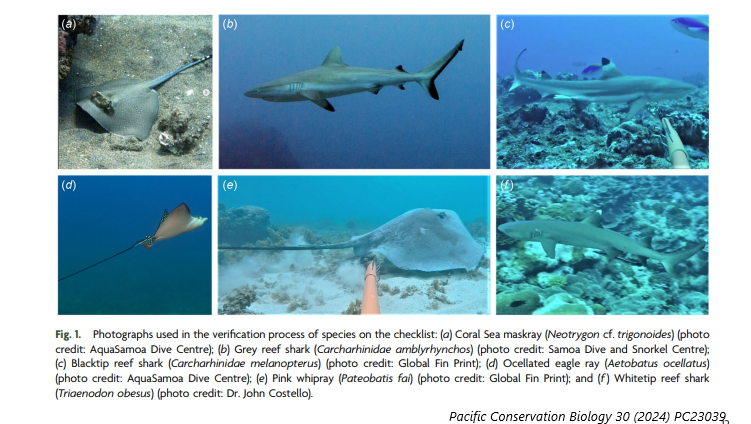
Data on chondrichthyan (sharks, rays, and chimaeras) populations is largely lacking for many countries and territories in the Indo-Pacific. Aims. This study aims to provide a desktop review and information synthesis of the biodiversity, threats, and conservation of chondrichthyans in the Samoan archipelago (Samoa and American Samoa), focusing on their interactions with fisheries and exploring their social, cultural, and economic values. Methods. This study uses various literature sources, citizen science, and in-country engagement to assemble a review of current available information on chondrichthyans. Key results. A total of 67 chondrichthyans were documented to be present or potentially present in Samoa and American Samoa, consisting of 23 ray species and 44 shark species. Thirty-six of these species were listed in Threatened categories on the International Union for the Conservation of Nature Red List of Threatened Species. A biological productivity analysis conducted for species with sufficient information indicated that the silvertip shark
(Carcharhinus albimarginatus), silky shark (Carcharhinus falciformis), bull shark (Carcharhinus leucas), oceanic whitetip (Carcharhinus longimanus), and whitetip reef shark (Triaenodon obesus) had the highest relative productivities. Conclusions. Both Samoa and American Samoa have relatively diverse shark and ray communities with management plans in place to protect chondrichthyans. These include participation in Western and Central Pacific Fisheries Commission initiatives, spatial protections, and community-based management programs. Implications. Current management approaches have the potential to provide significant protection to sharks and rays, however, their effectiveness may be hindered by a lack of proper enforcement, or compliance at the national and community levels.














